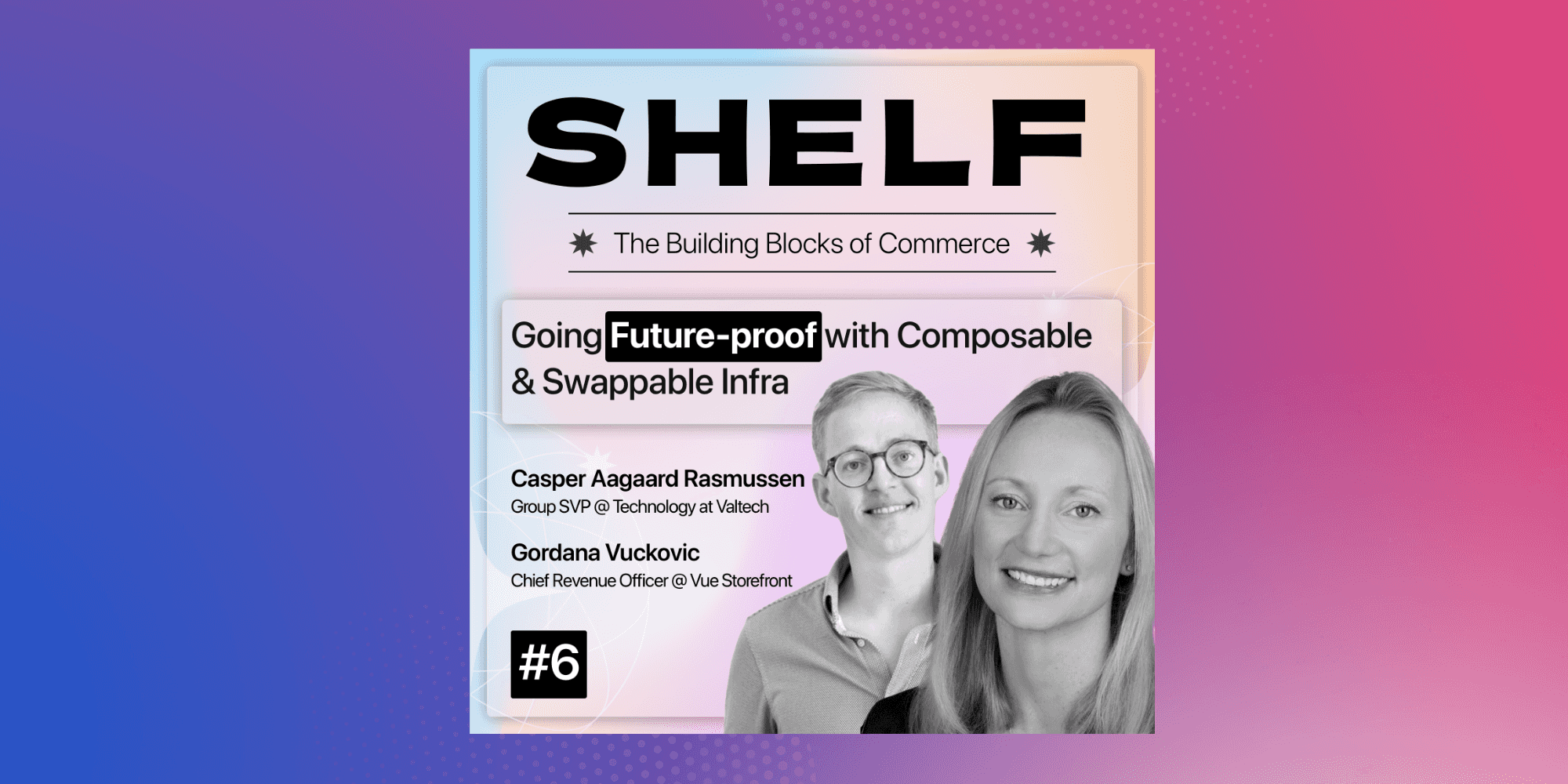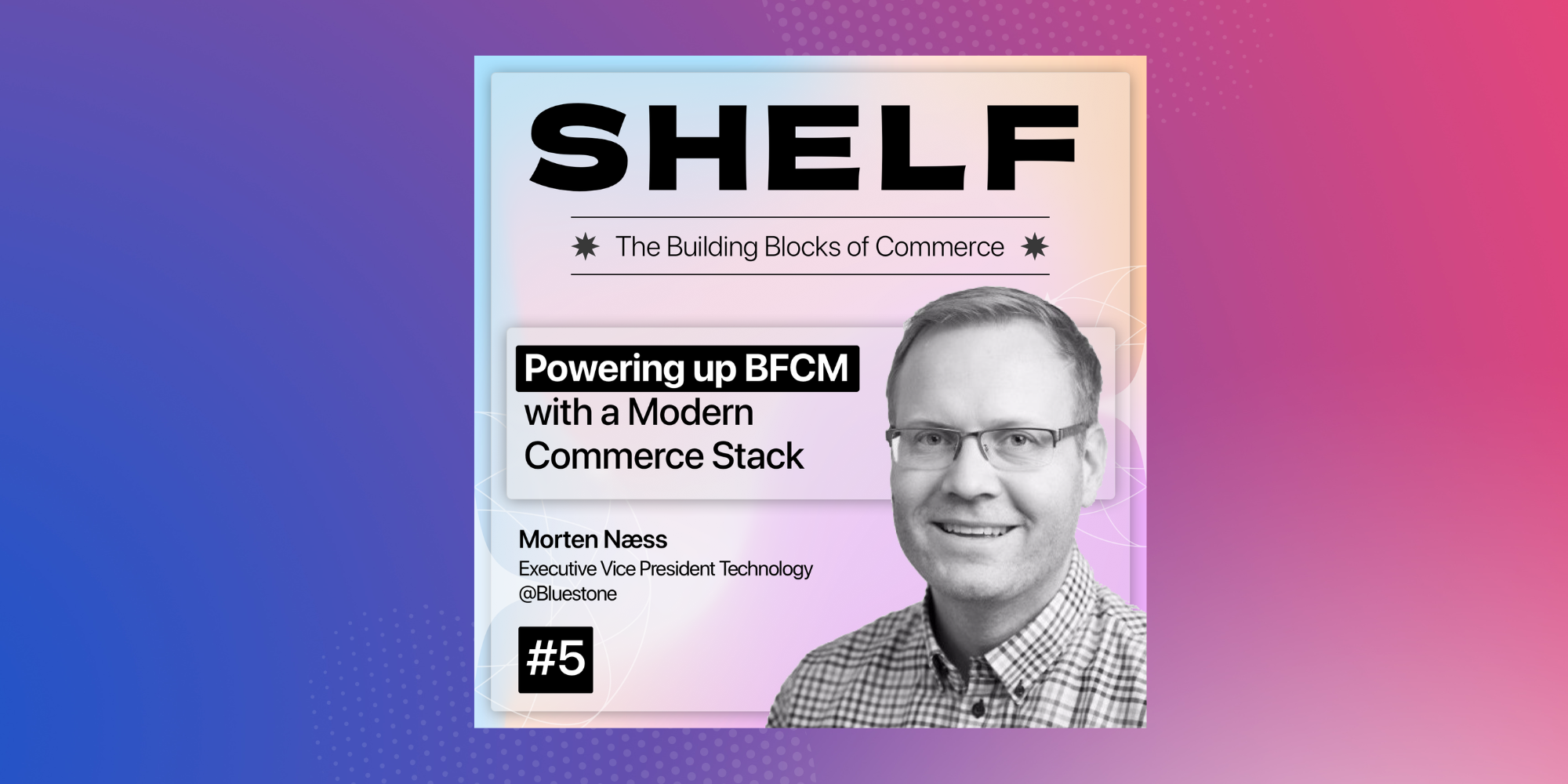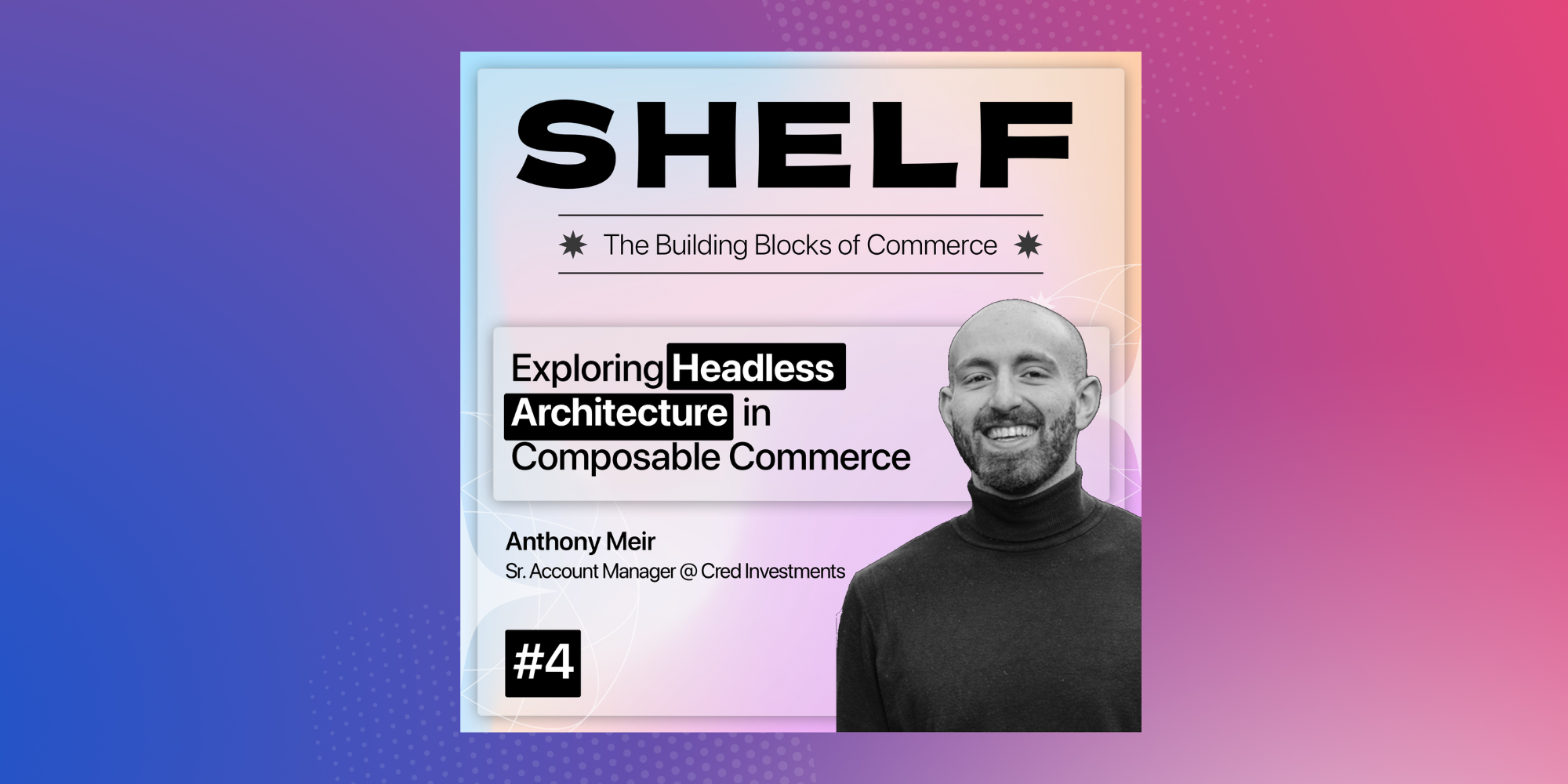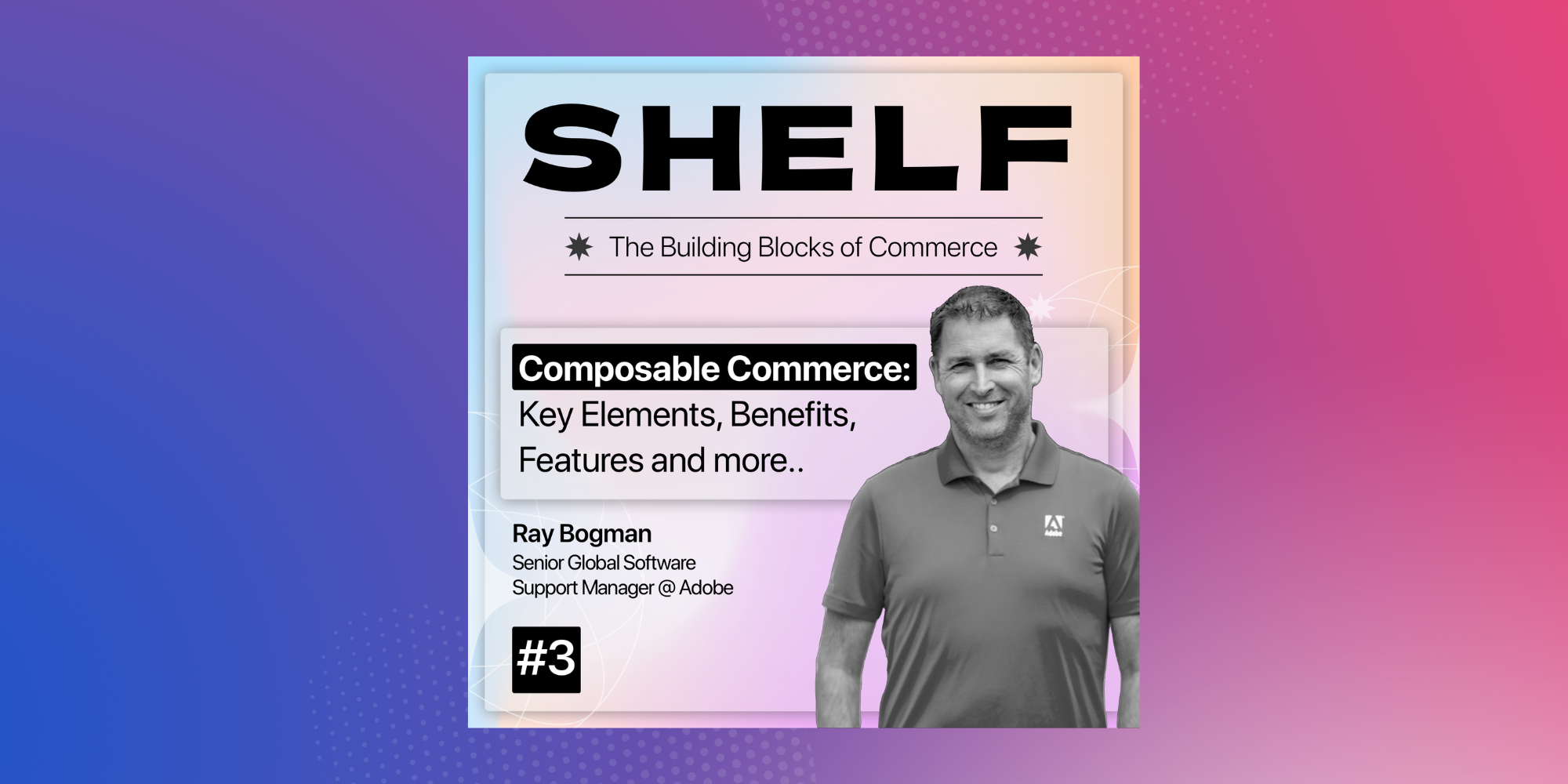Casper is the Global SVP of Technology at Valtech, and Gordana is the Chief Revenue Officer at Vue Storefront. Both Gordana and Casper are part of the MACH Alliance as Executive Board Members - a global tech alliance that advocates for open, best-of-breed technology ecosystems And today, on our final episode of Shelf Season #1, we have them both here at Mason - to speak about MACH and the Evolution of Commerce with Composable Architecture.
💬 Key takeaways from the conversation
- The past few years have demonstrated the rapidity of change in customer preferences and the business environment. E-commerce has experienced explosive growth. Speed and agility have become essential elements for success in adapting to these dynamic shifts.
- MACH's manifesto emphasizes the importance of future-proofing enterprise technology and enabling current and future digital experiences.
- The choice between an API-first approach and transitioning into an API world has a significant impact on the implementation, speed, ease, and agility of solutions. Businesses must always consider the opportunity cost involved.
- It is also always crucial to understand the fundamental architecture that will best support and align with the goal of setting up the business for success in this fast-paced landscape.
🎙 Diving in...
Kausambi
Hey, everybody, welcome back. And today, I'm very excited because it's double the trouble. I have both Gordana and Casper with me. And we're going to talk about how to FUTURE-PROOF Your Business with Composable Infra.
Just a quick intro. Gordana (G) is the chief revenue officer of Vue Storefront and Casper is the global SVP of Valtech -- and both of them are executive board members of the MACH Alliance.
And of course, anybody who's in e-commerce now knows what the MACH Alliance is all about. It's a global alliance, one of the first of its kind, and it advocates for open best-of-breed tech solutions. And it's trying to create an ecosystem that's meaningful for everybody, not just for individual teams.
We'll start with Casper. So what do you do, Casper? And why do you do that?
Casper
Nice to meet you first and foremost, and thank you very much for hosting us. As you're saying, we're here to kind of evangelize the important elements and the opportunities that MACH enables for businesses. My name is Casper. I'm the president of the Mars Alliance. And I'm also, as you said, the SVP of Technology of Tech.
I'm basically born and raised in digital commerce. Technology is my space and my passion. And just making businesses thrive is something that I care for each and every day. As a consultant, obviously, as the president of the alliance, I kind of co-lead the strategy of where we want to go and how we want to push the markets further.
And then about tech, I lead our strategy for MACH and composable and also participate in the journey of some of our most important clients in this transition towards future fit and flexibility and agility.
Kausambi
That's awesome. Thank you so much for being here and G over to you. What do you do, and why do you feel so passionate about what you do?
Gordana
I love tech and I love really solving business problems with tech. I had a little bit of an interesting journey having started as a software engineer, but then went into business and spent majority of my career on the business side. So leading the go to market team at U storefronts and I have really lived in the Mac composable world for years now.
Prior to this, I was on the headless side. So really got to understand what the backend and the headless approach and in that whole process I realized that the head is getting quite complex and somebody needs to take care of that also for merchants. And so I joined the storefronts and as the heads, right, the solution that brings all the headless composable together.
And we really help both business and tech teams in merchants by providing tools to get differentiating experiences at the door much faster and at much lower cost than usually, and help them really innovate and practice really at speed. So which is really important these days, just competitive on the brand side.
Kausambi
One thing that you mention, so I think so fundamental to everything that's, you know, for us coming from, I think a wider mid-market SMB kind of perspective and you coming from maybe more enterprise and mid-market, but still at the core of it, it's about speed and agility, right?
Tell us a bit about the alliance itself. I think how is it helping teams globally to make this kind of like paradigm shift almost from being monolithic to composable first?
Casper
Yeah. So first and foremost, MACH is a not-for-profit organization that we found it back in June of 2020. Our purpose, like you said, is really to evangelize for open enterprise fitting technology that unlocks a more future-fit ability for businesses going forward.
Meaning we want to make sure that technology is an enabler and never a limitation. And that is also why the awareness and the enablement of markets is so important to us. We help teams in many ways, but at least the three most important ways that come to mind is that we certify what is and what is not.
We are this gatekeeper to the marketplace and the potential shortlist, and the span of opportunity that exists. And this is, of course, where our members really fit in across three categories. In particular, we have the software vendors, like the storefront which is represented. We also have sites that are system integrators like this could be consultancies and agencies, which is what I represent.
And then we have enablers like some of this common tech that truly accelerate and also align the implementations of these architectures under the brand side.
Another pillar of our organization is really the ambassadors. This is where a lot of the practical experience comes through in our messaging and in our thought leadership. I always say that our ambassadors really brings the scars and this practical experience to life.
Kausambi
In your experience as one of the vendors that are kind of certified, I would say benefits. Do you see how has this changed more than just being able to reach out to customers better or be a part of an alliance? What has been your observations on how things have changed once you've joined the lens?
Gordana
Yeah, so I have been actually in MACH Alliance with my last company too and one of the founders, so I can actually believe it's been three years only. It's amazing journey and really the essence of why we even started talking about the alliance or this body a couple of years ago is to a demystify this new architecture that was emerging and to purify, to really separate the pure play as well as size, MACH versus maybe some of the more traditional technologies that we're trying to work towards magnifying.
It's built on a modern architecture, modern composable technology, and you can And so kind of separating from those that are not pure. And that's really the biggest benefit of just having. And this is why when we get when we work in the alliance, we do remove our commercial hats because we're all really passionate about helping merchants just understand and navigate these waters a little bit easier than it might be, except when they're just kind of doing the research.
Kausambi
Yeah, that's the thing about positioning. I mean, it's it's words and it can be copied and sometimes it's about uncovering that and understanding what lies behind it. Why is it so important for a merchant, whether a technology stack that they're evaluating or even the architecture that they're planning about -whether it's API-first versus if it's something that's moving to an API world? Why is that demarcation so important?
Gordana
Yeah, well, it is important because the fundamental architecture of these solutions are going is going to dictate really how they're implemented, how fast or implement, how easy and how agile they are. Because we talked already about agility and that's where pretty much everybody is after these days because we have to innovate fast on the technology side, on the merchant side, how do you set your business up for that?
And the technologies that are not pure-play MACH, will still struggle in those areas. They have opened some of their technology, but it is not as agnostic, it is not native fully to the cloud, it is not the APIs may not be as mature and all of this is going to ultimately slow down the development of new experiences that every merchant is is looking to do out there.
So it really does make a great difference in the fundamental architecture of the solutions that are being used.
Casper
And if I may add, one of the areas that are quite interesting, too, is that the scope of the market is also constantly expanding. Like if you look at it from a value chain standpoint, clearly being a commerce company as an example, you're generating a lot of value across the entirety of the customer's lifecycle, right? But the scope of the market is also constantly expanding.
Now when we're starting to see companies potentially starting to innovate with regard to supply and planning, companies are starting to innovate with regard to fulfillment and delivery. And we start to see these additional pillars of commerce almost emerging within our own portfolio, and thereby the scope of our architecture is becoming much broader than it has been historically, and that than I think any of us ever imagined when the balance was formed.
So I think it's really interesting to also see that the market's not as binary as it may be perceived, because clearly, as a company, as a business, you can't modify your entire stack on day one. You need to figure out where do you truly want a differentiated where is there value in being agile as a company? Meaning what are those must win battles or those big bets you want to make from a business strategy standpoint?
And that's what you need to unlock and enable because it needs to coexist with some degree of traditional thinking too.
Kausambi
This is a good segway to the next question. What could be some of these? If I'm a brand and, you know, I'm looking at adopting a more composable or swappable architecture today, what could be some of those major drivers for me?
Casper
So one clearly stands out, and that is the glass ceiling that a lot of companies see. Best suite types of approaches, right, where it's a one size fits all, and it's potential when you reach a certain degree of digital maturity, becoming a limitation to what you can do as a business and what types of opportunities you can react on which typically see that a transition to mass and I need to emphasize the word transition here.
It's a journey for a company. It's typically not a migration that we see being done over the course of a day, nor over the course of a year, because it's something that's constantly evolving. Just like the architecture would be. We see a lot of companies starting to, for lack of a better word, decompose their existing monolithic setups and the existing monolithic systems they have by starting to actually put in place technology in the places again where they want to increase the speed to market, where they want to increase the degree of agility, where they want to unlock the commercial opportunity to. We also see, in general, that a lot of brands are starting from a customer experience standpoint. Clearly headless is a prerequisite for this type of an architecture.
So it's really about the question of how and in what sequence as well. You want to facilitate this transformation with this transition.
Kausambi
And you know, I think it's common knowledge and I was reading in some reports sometime that today on an average, the consumers interfacing with a brand like 7 to 9 times before they actually make a decision to buy. And that really ties in very strongly in the omni channel and connecting the dots in customer experience.
So do you see any early hiccups or drawback that a brand might have to keep in mind and be cautious about as they're moving to a more distributed architecture versus having like a cool platform that manages everything into it?
Casper
Yeah, for sure. And I just want to challenge you for a second because I would even ask the question, has there ever been that single platform? Because if you're thinking about the customer's journey and its entirety, you're talking omni channel, you're talking about the breadth of interaction that customers are going through.
There is no single unicorn platform within that mix because of the breadth. And what we can do now with Mass is to actually orchestrate all of the systems and all of the types of capabilities and services that goes into serving that customer through a single type of technology architecture across. So I don't agree necessarily with the statement of a single platform or a single throat choke because I think by nature it has been a very distributed and extremely fragmented architecture.
You need to choose the best, best of rates for you. You need the right tools for the job, the right types of capabilities that fit the opportunities that are ahead and initial compose your own solution. And it also means that the stack that you're going to work with doesn't prescribe or influence the types of features. Now that all comes down to a business first type of a design, meaning you own your own destiny.
And that is something that potentially can be fairly complicated if you don't have a grip of who your customers are or what they actually want from your brand or where your brand is different and where you potentially can simply use commodities in order to solve for the indifference. So going through that business first type of a design process, at least, we typically see being a potential hurdle or at least a process that we need to support the business to go through to make sure that they simply compose their own solution to and don't just end up expecting that the features are being prescribed by the actual vendors that they choose to bring in.
Kausambi
And one point that crossing my mind is that a lot of times when you read about Mach in general, composable architecture in general, it just is almost like this kind of a, you know, a mental model that people get into that this is pretty much my last major replatforming effort ever. I can come to this level of my ecosystem, my own business and whatever sense they need.
Do you think this is a super tall claim or is it something that is really, really fundamental to the default movement?
Gordana
Well, I mean, I think that's exactly the idea. Right. The idea is, is that a business doesn't stop business, innovate, market changes. Right. And every business needs to be able to to do what's right for them at that time. And so really, what this composable or swappable in this case architecture allow is for businesses to continue to choose the best solutions for them because as the needs of the solutions may be different right.
And you were kind of talking earlier about even going from a smaller business to mid-sized business to large. Right. As companies grow, their needs are going to grow. What shouldn't change is the fundamental architecture. They shouldn't have to redo everything every time it kind of at every juncture of their business, they should be able to adjust those parts that are changing and do that in a in a quick fashion.
Casper
And there are just certain types of qualities of also the engineering that you need to put into these types of architectures that allow for this never re-platform notion like the fact that you approach integrations through a decoupled approach that is event-driven naturally allows for much more flexibility in what that source or destination system is. So while you can embrace and create a monolith, we've also seen some of those.
Unfortunately, there are just certain qualities that kind of enable you to also grow with the architecture. And as I previously said, the scope of the architecture is also expanding, meaning the way the architecture looks today, the principles are static, meaning it looks common, but will grow in the range of the types of digital touchpoints, of the types of digital capabilities, of the types of processes and people that impact like that will constantly grow.
Kausambi
I love that. It's almost like you're getting your hands on something that not just grows with you as a business. You know, from when you start to tell, you grow across multiple brands, multiple regions, multiple segments of customers, trends, etc. But it's almost like it's something that empowers you to sell anywhere, anytime and to anyone without really having to worry about what's following that anymore.
Casper
And that is really where this notion of Agile comes from, right? Like appreciate the uncertainty that exists in this world, meaning who knows what the customer's needs and wants are in two years time, none of us were able to predict that two years ago.
Kausambi
Any final words or advice that you would like to share with brands who are kind of on the verge of re-platforming, the composable architecture and they're kind of at the cusp and wondering whether to take the plunge or not.
Gordana
Yeah, I think that's I would maybe turn it the other way. Writes, in looking at this decision, I would ask, what is actual cost of the status quo? Right. Because we talk about replatforming and so on. And for folks that may seem like a major body of work, but not being able to innovate at speed. How much does that really cost the business?
Right. Not being able to engage with customers on all channels, not being able to experiment really with with new revenue streams. A lot on the backend, right. Even the smallest things, things taking weeks or months to accomplish. Right. So all of these things kind of adds to lost revenue and that's every time that we go through this exercise of understanding the cost, the status quo far outreaches, the efforts and the cost of moving to composable.
And you know, that seems to be what a lot of projects are starting. But yes, I would as people are sitting on this decision, I would just really look at what is it cost not to do something, and I think that would be far greater.
Kausambi
Yeah. Is there a simple test for people to actually, you know, identify the cost, evaluate the cost without having to go through a lot of brainstorming and kind of soul searching?
Casper
The opportunity cost.
Like there are benchmarks, clearly, like we're bringing omnichannel benchmarks in place, for instance, when we need to quantify, quantify that, that opportunity cost, the cost of missing out. So there are certain benchmarks that companies can leverage for what is the impact of actually driving commerce across channels and being omnichannel enabled. And those are simply benchmarks that you can apply on top of your existing commercial and revenue models to see what is the potential, the uplift potential from it.
Kausambi
Perfect! Thanks both - I learned a ton, and that was great talking to both of you. I would love to bring you back at a later point again on some episodes as we go through the journey of learning a lot about how different companies and different brands are adopting and how they're, you know, what are some of the challenges they're facing and bring you back again to kind of address that at maybe next quarter.
So thank you so much again. And yeah, that's a wrap up for today.





